Key takeaways:
- Branding projects encompass a brand’s essence beyond visuals, focusing on the emotions and values it conveys.
- A well-crafted branding strategy is vital for building trust and meaningful relationships with the audience.
- Research and discovery lay the groundwork for impactful branding, allowing for the creation of resonant brand identities.
- Consistency, storytelling, and flexibility are essential elements for successful branding execution.
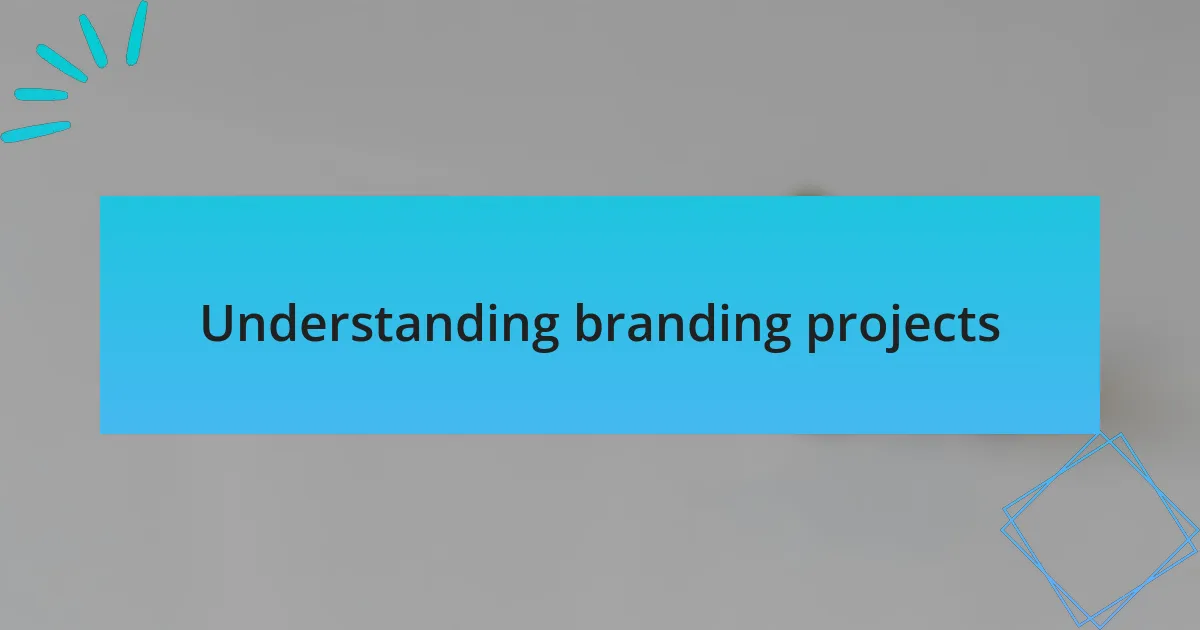
Understanding branding projects
Branding projects are more than just creating a logo or setting a color palette; they encapsulate the entire essence of a business. I often think about the time I worked with a local coffee shop that wanted to convey warmth and community. This experience highlighted how crucial it is to understand not just the product but also the emotions and values behind a brand.
When I dive into a branding project, I ask myself what story the brand wants to tell. This introspection often leads me to discover hidden gems in the client’s journey that make their brand unique. For instance, in one case, a startup’s founders shared their love for sustainable practices, which we turned into their core branding message. Isn’t it fascinating how authenticity can resonate with customers on such a deep level?
It’s essential to immerse yourself in the target audience’s mindset during a branding project. I remember conducting a focus group for a fashion brand, and the insights we gathered completely reshaped their strategic direction. Have you ever realized just how powerful it is when a brand aligns perfectly with its audience’s desires? This connection is what transforms a simple logo into a relatable and memorable identity.
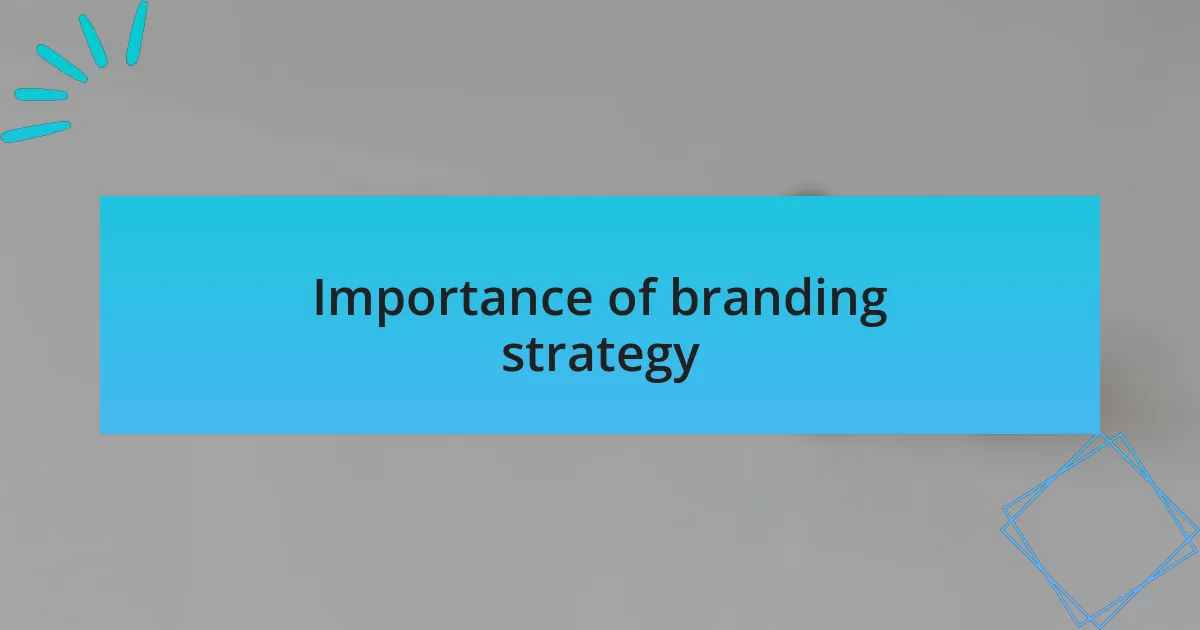
Importance of branding strategy
When I reflect on the importance of a branding strategy, I’m reminded of a project I undertook with a non-profit organization focused on environmental conservation. We spent weeks developing a narrative that not only highlighted their mission but also connected emotionally with their supporters. This process revealed to me that a well-crafted branding strategy is vital; it serves as a compass that guides all marketing efforts and builds meaningful relationships with the audience.
Branding strategy goes beyond visuals; it’s about establishing trust. I once collaborated with a tech startup whose initial branding felt cold and impersonal. Through strategic adjustments, we made their messaging more approachable. This change didn’t just enhance their visual identity—it helped them foster a community of loyal users who felt genuinely connected and valued. How incredible is it when a brand evolves to become more relatable?
Ultimately, a strong branding strategy acts as a bridge between a business and its customers. I recall working with an artisanal bakery that had unique flavors but struggled with visibility. Through thoughtful branding, we highlighted their story and values. This shift not only captured attention but also created a loyal customer base eager to share their experiences. Isn’t it amazing how a strategic approach can lead to such profound engagement and advocacy?
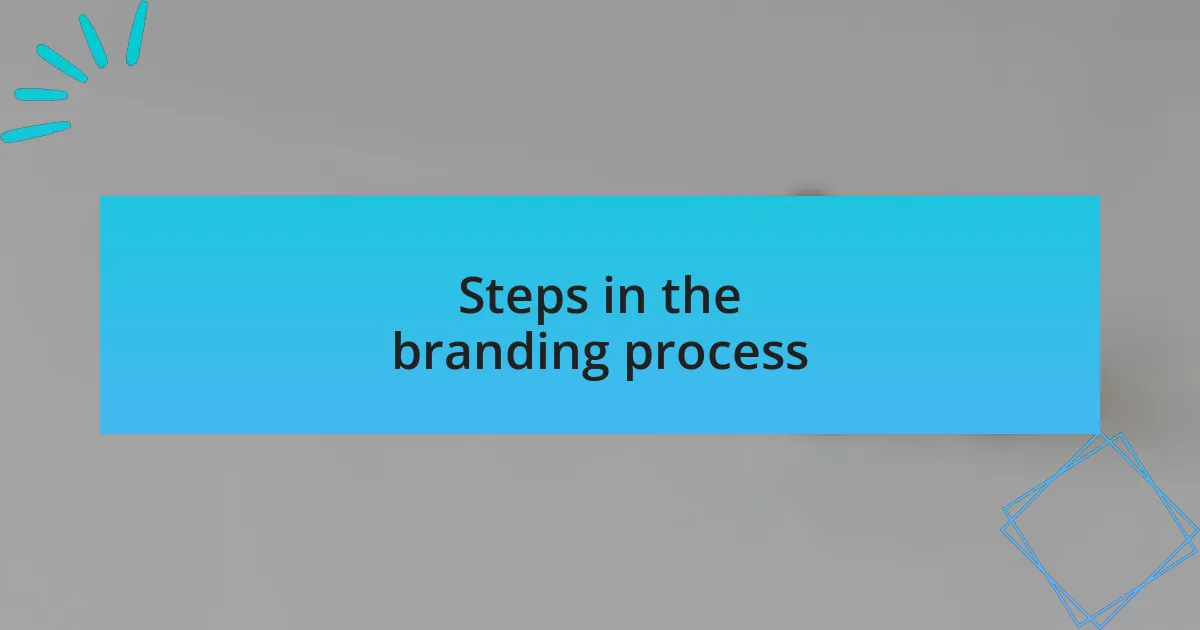
Steps in the branding process
When embarking on a branding project, the first step is often research and discovery. I remember a time when I needed to understand a client’s target audience deeply; we hosted focus groups and analyzed competitor strategies. This stage is crucial because it lays the groundwork for everything that follows, allowing us to shape a brand that truly resonates.
Next comes the development of the brand identity, which means creating visual and verbal components that encapsulate the essence of the brand. In one project, I collaborated with a local coffee shop. After brainstorming sessions, we crafted a logo and color palette that reflected their cozy atmosphere and commitment to sustainability. Seeing our concepts come to life in their store made me realize the emotional power that design can wield.
Finally, we move to implementation. This is where I often feel a mix of excitement and nervousness. For instance, when we relaunched the website for a fashion brand, I was eager to see how customers would react to the new look and feel. Monitoring that initial feedback was both thrilling and rewarding, reinforcing my belief that branding is not just about aesthetics; it’s about creating authentic connections that spark genuine conversations. How do you measure that kind of connection? I find it’s often in the heartfelt stories and testimonials from customers.
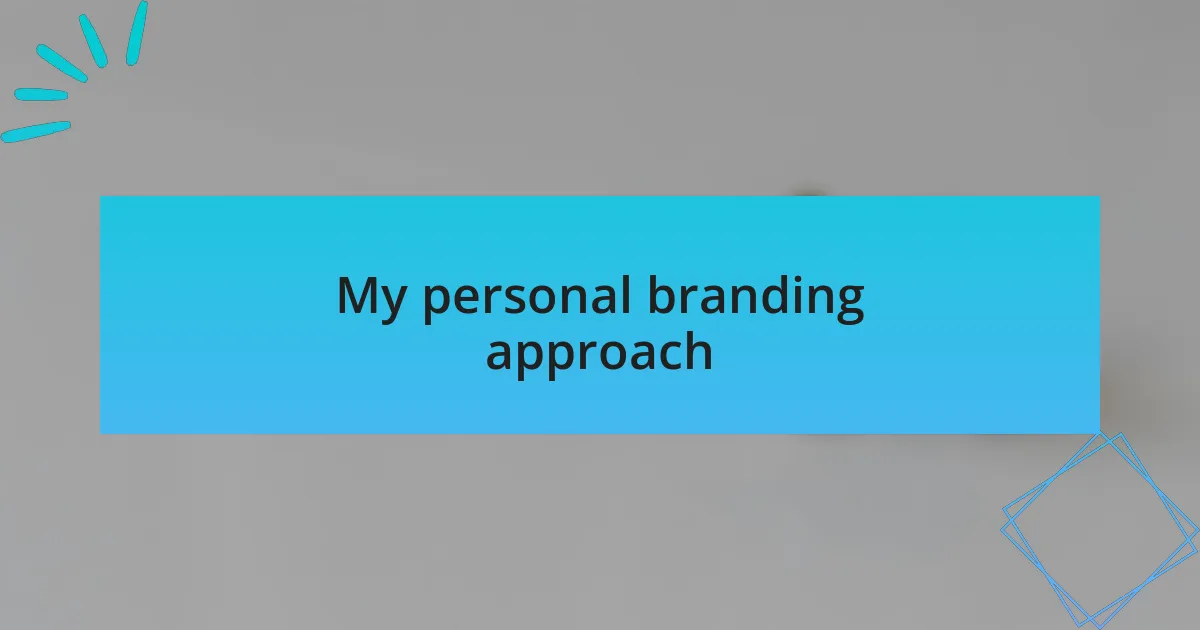
My personal branding approach
When I approach branding projects, I start with a deep introspection of what I want the brand to represent. I recall a particular project with a tech startup where we sat down together, exploring their mission and values. That conversation revealed not just what the company did, but why it mattered, giving me a clearer direction for the visual identity we would create.
I often find that storytelling is at the heart of successful branding. During one project, I helped an artisan bakery convey their heritage through design. We infused their branding with elements reflecting their family recipes and local ingredients. Seeing customers connect emotionally to their story reinforced for me that a well-crafted brand is about more than just products—it’s about the connection to people and memories.
As the project evolves into the public eye, I cherish the thrill of unveiling the brand to the world. I remember when we launched a rebranding campaign for a local nonprofit; the joy and excitement we felt during the reveal were palpable. How do I ensure the brand resonates? I stay attuned to the community’s reactions and let that guide future refinements. It’s in those real-life interactions where the true essence of branding shines through.
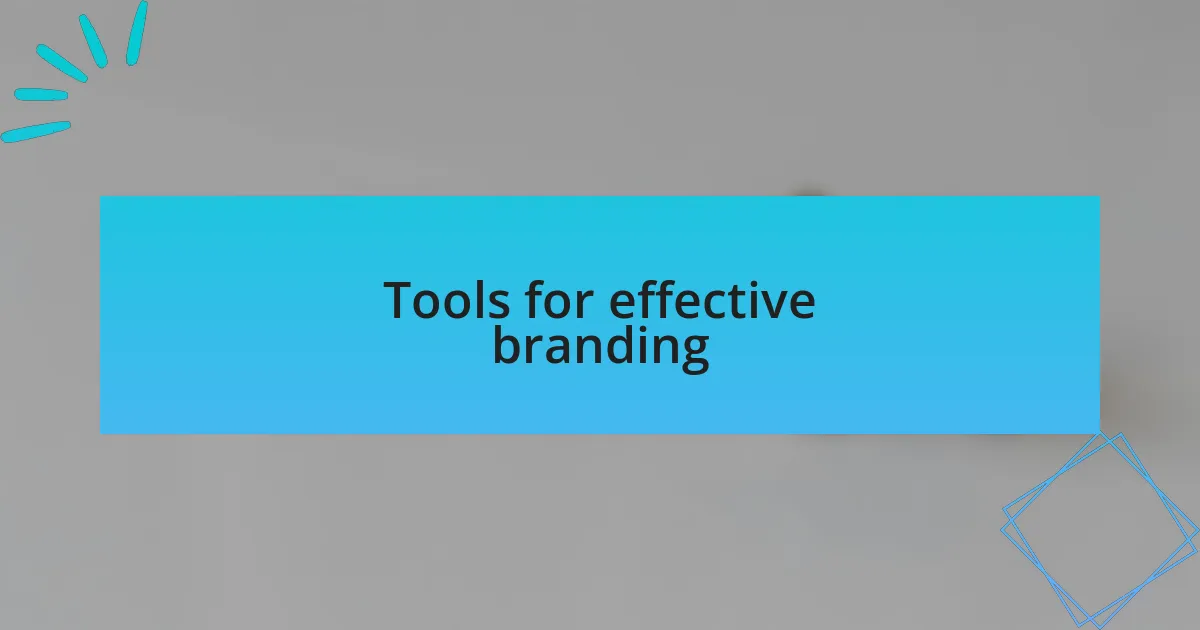
Tools for effective branding
When it comes to tools for effective branding, I have a few favorites that always deliver results. One that stands out is Canva; I love its user-friendly interface for creating visual content that reflects a brand’s personality. I recall using it to design social media graphics for a café. The simplicity allowed me to experiment quickly and find designs that truly captured the café’s vibe, making the final output a reflection of their essence.
Another indispensable tool in my branding toolkit is Google Analytics. By diving into the data, I can gauge how audiences interact with a brand online. I remember analyzing traffic for an e-commerce site we revamped. The insights we gained not only refined our messaging but also revealed unexpected trends that helped shape our seasonal campaigns. There’s a thrill in seeing numbers transform into actionable strategies, bringing the brand to life in a way I hadn’t anticipated.
Lastly, I can’t emphasize enough the importance of customer feedback tools like SurveyMonkey or Typeform. Capturing client sentiments has often guided my branding decisions. I once sent out a survey after a brand launch, eager to understand how the new identity resonated. The responses were illuminating—some details I thought were minor turned out to matter significantly to the audience. Isn’t it fascinating how listening can shape a brand’s journey?
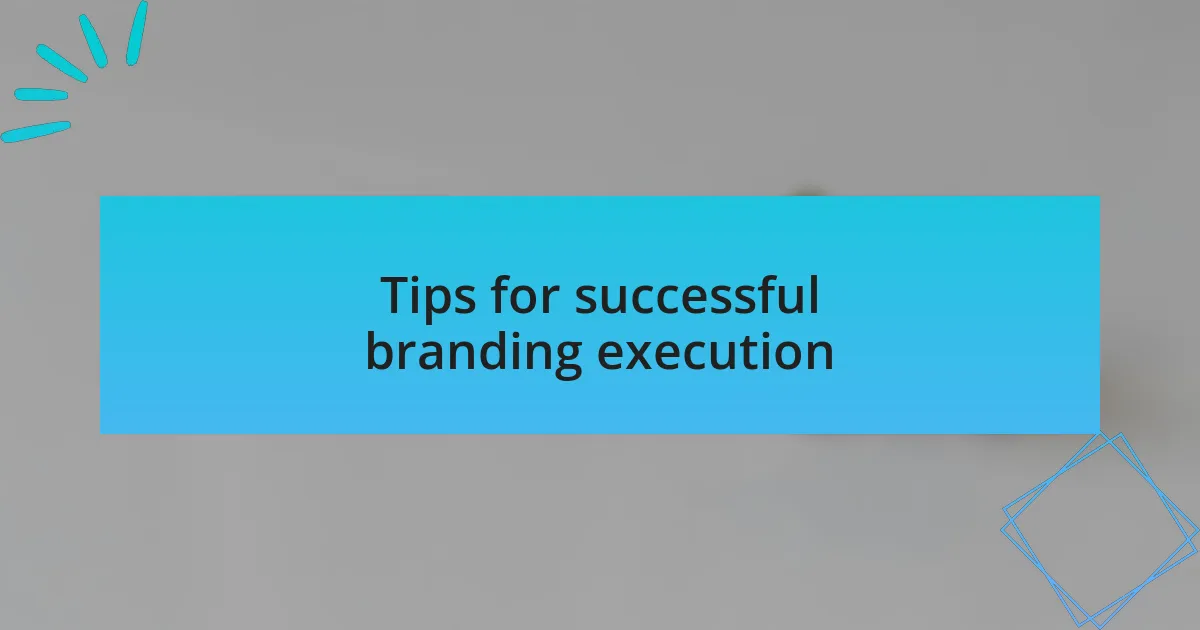
Tips for successful branding execution
When executing a branding project, consistency is key. I’ve seen how varying visual elements can dilute a brand’s message. In one project, we had a client with a beautiful logo but inconsistent color usage across platforms. It took some serious discussions, but once we established a cohesive palette, I could see the difference in brand recognition almost immediately. Have you ever noticed how some brands stick with you just because of their uniform style?
Another essential aspect is storytelling. I believe that every brand has a unique story that deserves to be told. I once worked with a non-profit that struggled to engage their audience. By crafting a narrative around their mission, we created a compelling video that showcased real-life impact. The emotional response was incredible, and I still get goosebumps thinking about the feedback we received. Wouldn’t you agree that a powerful story can elevate a brand beyond just a logo?
Lastly, embracing flexibility during the execution phase has proven invaluable. There have been instances where initial ideas needed to be reevaluated based on market reactions. In one case, a social media campaign direction felt flat, and I had to pivot quickly. This adaptability not only saved the project but also opened up innovative avenues that hadn’t been considered before. Don’t you find it intriguing how sometimes the best outcomes arise from unexpected changes?